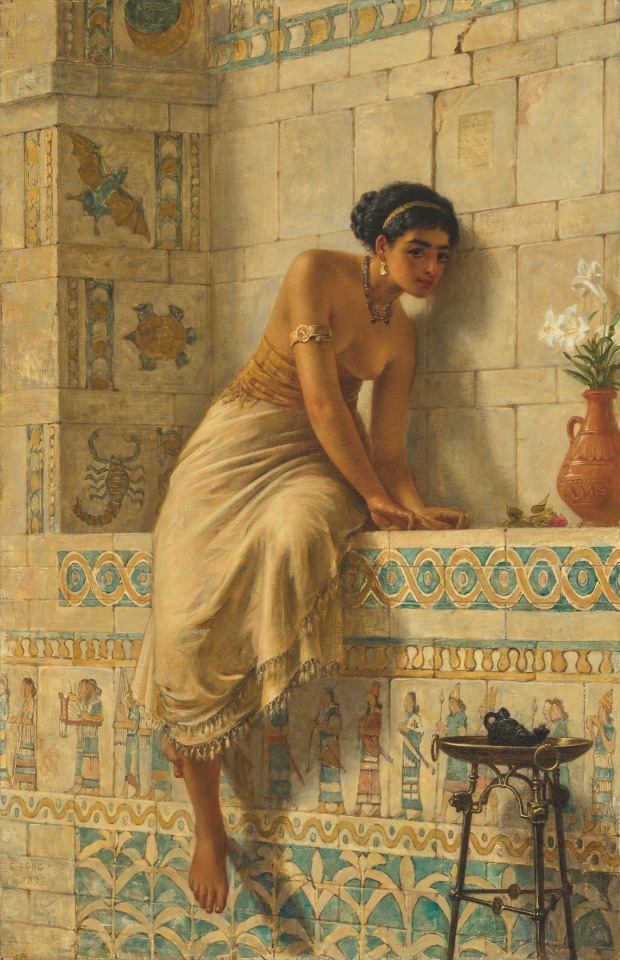#roman literature
Explore tagged Tumblr posts
Text

Thisbe, 1875
Edwin Long
#Thisbe#1870s#Edwin Long#art#art history#painting#Metamorphoses#ovid#literature#roman literature#english art
1K notes
·
View notes
Text
little Virgil

#my beautiful emo child#virgil#vergil#publius vergilius maro#my art#art#ancient rome#ancient poetry#ancient literature#roman literature#roman poetry
102 notes
·
View notes
Text

Circe for the end of summer 🐬🌞🐚✨one I needed to stop editing and just post since I've had it since june. I can always make things better😔
Just so u all know, right now I'm not drawing so much because I'm coping with a heat wave and Aristophanes-hating classmates. But I reminded the professor of a reading assignment she forgot to send our class, so I've had my revenge. And, it's none of my business if others enjoy that lifestyle. I chose suffering which is why I'm in this particular situation with these people to begin with, now I choose peace😊(<- becoming the joker)(<- might delete later)
140 notes
·
View notes
Text



The painting Orpheus and Eurydice, by George Frederic Watts.
Lines from the song Talk, by Hozier, and extract from Orpheus and Eurydice, from Book X of Ovid's Metamorphoses.
#art#artworks#artwork#paintings#painting#george frederic watts#literature#literary quotations#literary quotes#quotes#quote#poetry#poems#poem#poems and fragments#roman literature#roman poetry#ovid#ovid's metamorphoses#andrew hozier byrne#hozier#wasteland baby#ancient greece#ancient roman empire#roman empire#ancient rome#orpheus and eurydice#orpheus#eurydice
107 notes
·
View notes
Text


"Be patient and tough; someday this pain will be useful to you.” ― Ovid
Painting: Detail, work in progress by Lingly (https://linglyart.com)
#poetry#franz kafka#sylvia plath#classical quotes#albert camus#literature#quotes#classics#booklr#classical literature#dark acadamia quotes#dark academia#ovid#madeline miller#the song of achilles#classic literature#literary quotes#lit#shakespeare#romeo and juliet#sad academia#the secret history#dostoevksy#crime and punishment#book quote#bookblr#books#roman literature#greek literature
60 notes
·
View notes
Text

was anyone going to tell me that ancient rome had an estrogen spring
30 notes
·
View notes
Text

Artemisia Gentileschi, Lucretia, 1627
“The blade, which she had kept hidden under her gown, she then plunged into her heart, and she fell, collapsing onto her wound and dying.”
Livy, Ab Urbe Condita 1.58
(original translation)
#art history#art#artemisia#artemisia gentileschi#painting#lucretia#baroque#roman history#livy#roman literature
35 notes
·
View notes
Text

Da iugulum cultris, hostia dira, meis. 🗡️
No delay is mine: I act as priest with sure prayer. Whoever is at my rites, show favour to my words: whoever is at my rites, speak your words of mourning, and with wet cheeks begin your weeping for Ibis: and run with every ill, and on stumbling feet, and cloak all your bodies with black garments! You too, why hesitate to don the fatal bands? Now your funeral altar’s ready, as you yourself can see. Your cortège is prepared: no delay to the sad prayers: dread sacrifice, relinquish your throat to my knives. Ibis (vv. 93-106), Ovid
I've been wanting to draw something more 'classical' for a while, so here's my interpretation of Ovid in his Ibis! It's somehow darker than what we are used to see, but he's still our beloved poet.
#ovid#ovidius#ovidio#ancient rome#roman empire#roman literature#roman mythology#greek mythology#ancient greek mythology#fanart#art#taisart
27 notes
·
View notes
Text
The day, but not their sorrows, ended thus
The Aeneid, Virgil tr. John Dryden
11 notes
·
View notes
Text


Watch as a video instead: Greek Myth Comix tells an Ancient Ghost Story feat. Pliny The Younger
https://youtu.be/mLLo8Y5ZZyM
Teachers: get this as a poster or PDF for class: https://greekmythcomixshop.wordpress.com/2020/11/06/an-ancient-ghost-story-comic-pdf-or-poster/
#ghost story#ghost stories#halloween#happy halloweeeeeeen#spooky#classical civilisation#classics#pliny#Pliny the younger#Athenodorus#ancient ghost story#Roman history#Roman literature#tagamemnon#illustration#comic#comix#spooktober#roman history teaching#supernatural#line art#black and white#Roman ghost story#greek myth comix
122 notes
·
View notes
Text
#ancient rome#tagamemnon#ancient history#classic studies#roman poetry#roman literature#Mine has to be Ovid#Sorry but that man had a natural talent#and he fucking knew he did#besides he did wrote the heroids
7 notes
·
View notes
Text
Why was vergil coughing off blood all the time?
He had endometriosis
#peak humor#shitpost#virgil tag#the shitty comedy hooray#publius vergilius maro#virgil#vergil#ancient rome#roman empire#roman literature
18 notes
·
View notes
Text

Lost tomb vibes🤎🪲🥀
I didn't get any photos of them, but at the Etruscan museum I was looking at the bronze tomb figurines, and imagining a whole tomb that's full of them🖤
Etruscan moodboard:









I also drew a comic for this in my sketchbook🫣I'll try to find it and add it to the post or rb but I'm too tired from finals this week
45 notes
·
View notes
Text
Ancient Women Writing: Rome
The great writers of ancient Rome – and most of its historical figures – are decidedly male: Ovid, Virgil, Tacitus, Cicero, Suetonius, Horace, Catullus, and Juvenal, to name a few. While wealthy women in Roman did enjoy some manner of public life and political influence, they were generally confined to the domestic sphere – though Rome’s domestic sphere was a bit different than are own. While…
#ancient literature#ancient women writing#history#literary history#literature#literature history#roman literature#writer#writers#writing#writings
5 notes
·
View notes
Text
Provenance mysteries: Opera, quae exstant L. Annaei Seneca

This edition’s provenance mystery features a three volume set of the collected work of Seneca: Opera, quae exstant L. Annaei Senecae ; cum integris Justi Lipsii, J. Fred. Gronovii, & selectis variorum commentariis illustrata ; accedunt Liberti Fromondi in quæstionum naturalium libros & [apokolokuntosin] notæ & emendationes, printed by Daniel Elzevir in Amsterdam in 1672. It includes commentaries by the noted Dutch humanist Justus Lipsius and botanist Johannes Fredericus Gronovius amongst others.

As can be seen in the photograph, the book is bound in vellum over boards with a gold-tooled armorial crest on the front (and back) boards. The coat-of-arms has the motto ‘Honi soit qui mal y pense,’ part of the British royal motto, and also used by knights and ladies of the Order of the Garter. The coat-of-arms is probably easily identifiable by someone with the knowledge and skills, but remains a mystery to this writer. There is no other provenance information in the book itself, and no record of its acquisition by the Library.
The book was published during the period when Daniel Elzevir worked with his cousin Louis Elzevir in Amsterdam, printing and publishing a range of classical Latin texts in octavo format, such as this one. The gilt armorial stamp and vellum binding sets this book apart from many of the books in our collection, which tend to have undecorated calf bindings. Vellum and parchment bindings are commonly found in continental libraries, but their presence is not as common in seventeenth century English libraries. Vellum was an expensive material to use as well, suggesting that this was a high status item for its owner.
The book features in the Library’s current exhibition: Mapping the Early Modern Inns of Court. This exhibition highlights some of the areas that the ‘Mapping the Early Modern Inns of Court’ group has explored in seminars and publications: recreation (fencing, revelling, and gaming); literary culture at the Inns; religion and preaching; learning the law and verbal skills; travel and exploration endeavours. Barristers regarded Seneca as a model orator and lawyer, and they frequently studied, quoted, and translated his works. They were taught Senecan verse while still at school, and continued to study, and translate his works as adults.
As ever, if you recognise this armorial device or have further comments please get in touch: [email protected].
Renae Satterley
Librarian
August 2024
#library#law library#mtlibrary#inns of court#history#rare books#libraries#books & libraries#london#rarebook#roman literature#seneca#vellum
14 notes
·
View notes
Text
difficilis facilis, iūcundus acerbus es īdem:
nec tēcum possum vīvere, nec sine tē.

unbearable and agreeable, you are both pleasant and bitter in equal measure:
I can neither live with you, nor without you.
#this is martial epigrams 12.46 btw#we were studying it and I was like. omg#shoutout to runner-up in the macdennis roman poetry competition: catullus poem 85!!#aka odi et amo#macdennis#iasip#sunny#it’s always sunny in philadelphia#latin literature#latin#martial#roman literature#latin poetry#roman poetry
26 notes
·
View notes